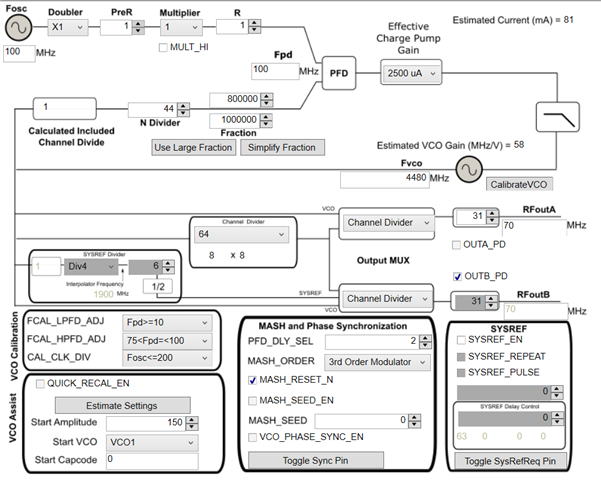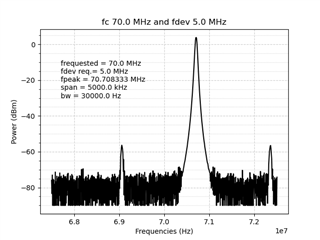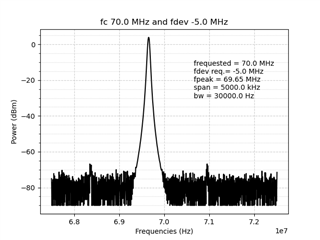Hello,
We want to do a custom LMX2572 generic driver and we observe some limitations in mode FSK with frequency deviations. We use the eval board LMX2572EVM.
Those problems have been observed using TICS-Pro. During our test, we define a fixed frequency on the "PLL" panel. Then we go on the "FSK" part of the "User Controls" panel. We configure the PLL as below :
- FSK_MODE_SEL : FSK SPI
- FSK_SPI_LEVEL : 2FSK
- Define: FSK_DEV0, FSK_DEV1 and FSK_DEV_SCALE according to eq. 9 &10 p73 (FSK_DEV_SCALE is defined to have higher possible value for FSK_DEVx).
The first limitation appears:
if Fpd = 20MHz and we define an output frequency at 6GHz we can't to a deviation of -20.1MHz (in order to have a output frequency of 5.9799GHz). +20.1MHz deviation works.
or with the same configuration, we define an output frequency at 3GHz, the maximal deviation is -10MHz around 3GHz (corresponding at -20MHz deviation around Fvco 6GHz). +10.05MHz deviation works.
It seems that we can't do a negative deviation of more than Fpd. When the PLL is asked to do the negative deviation, it will just outputs the carrier frequency.
The second limitation also concernes negative deviations. The PLL outputs a wrong frequency (higher thant the one requested) and the spectral signal has lots of unwanted harmonics as you can see on the figure below. 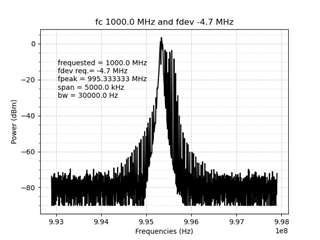
Here, normal behaviour :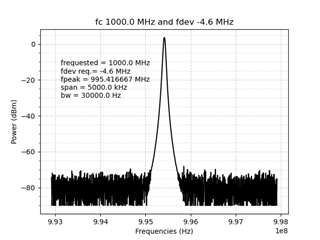
Here is a table of the limitations we observe (here with PLL_DEN = 100000 and Fosc = Fpd = 100MHz):
| carrier frequencies (MHz) | Maximal deviations (MHz) |
| 100 | -0.600 |
| 1000 | -4.6 |
| 2000 | -9.4 |
| 3000 | -14.4 |
| 4000 | -18.7 |
| 5000 | -25.1 |
| 6000 | -29.0 |
We have observed the results with various Fosc = Fpd (20, 25, 50, 100 and 200MHz), PLL_DEN (100k, 1M and 10M) or FSK_DEV_SCALE (minimum or 10).
It seems that the maximal deviation depends of the output frequency. The lower the output frequency is, the lower the negative deviation is.
Is this behaviour described somewhere ?
Thanks in advance for your answers.
Regards,
Malo


